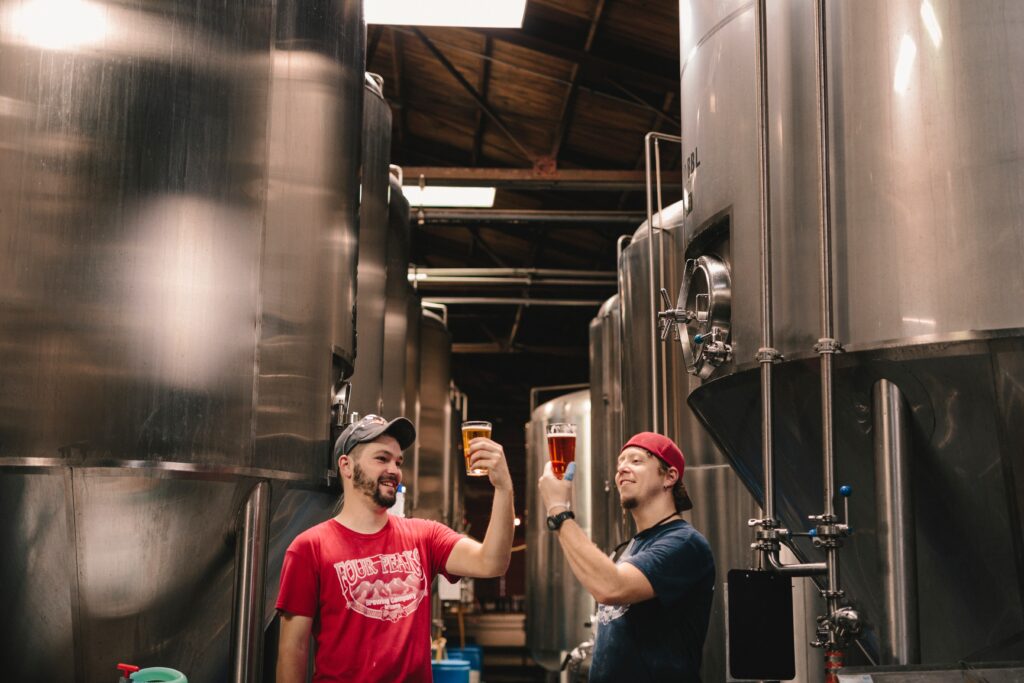Initially called micro-brewing in the 1990s, the craft beer brewing industry, as it known today has significantly grown since the popularity of homebrewing started trending in the 1970s. The art of brewing small-batch signature style suds has come a long way since its cottage industry days of the 1970s. It has since morphed into regional associations and national organizations. An outlet for burgeoning brewers with their own flavor combinations and beer styles, small batch brewing is a bubbling industry. But what constitutes a small batch craft brewery? According to Craftbeer.com, a small craft brewery produces 6 million barrels of beer or less annually. For reference, one-barrel equals 31 U.S. gallons.
Although the craft brewery industry showed slight decline in 2020, down approximately 9.2% from 2019, the loss was seen in the bars and restaurant category with a shift to packaged goods, which many attribute to pandemic-related restrictions. However, the bright side of these downcast statistics is that even in the challenging year of COVID, small and independent U.S. craft brewers poured $62.1 billion into the economy as well as over 400,000 jobs and the number of startup breweries is on the rise.

Ready, Set, Brew!
So, with all signs pointing to a steady recovery – the easing of pandemic-related restrictions in the food and beverage industry – new craft breweries are popping up all over. Here, a guideline of what you need to know to get your craft brewery passion project up and running.
- Write a business plan.
As with any new business startup, a business plan is needed for funding. It is used to explain concept, the competitive market where your business will be located, the type of business it will be, and the finances or costs associated with running it. - Define your business concept.
What type of brewery is it? There are six craft beer market segments. Microbrewery (produces less than 15,000 barrels of beer a year), Brewpub (offer food and in-house beer), Taproom Brewery (usually attached to the brewery and doesn’t offer full food service), Regional Brewery (next level microbrewery that produces 15,000 to 6,000,000 barrels of beer), Contract Brewery (a brewery that is hired to produce the beer for another business) or Alternating Proprietor (a licensed tenant brewery that takes possession and all costs of a shared brewery while its beer is in production).
Who are your customers? Know your target audience/patron.
What is your brand? Establish a detailed branding and growth strategy. In a nutshell: brew a good beer and a great branding story. Next, devise a growth strategy based on your local competitive market and make sure your beer is available in local bars and retail outlets. Distribution, marketing messaging and product promotion will get your product noticed and establish positive word-of-mouth reputation. - Estimate the startup cost.
Depending on the type of brewery, this number may vary. Things to consider: brewery equipment cost, retail/restaurant-style furniture cost, retail space rent or mortgage, brewing/food/business supplies, etc. Startup costs can range from $500,000 to $1 million, or more. - Secure your brewery’s business funding.
Financing usually comes from more than one source. Whether it is from self-funding (self, family and friends), investors, traditional or SBA loans, or crowdfunding, due diligence and a practical approach will help establish a strong foundation – acquire more than you think you will need, unexpected expenses can be an unwelcome surprise. - Apply for licenses and permits.
Advanced planning is necessary with permits and licenses. Depending on location and government regulations, the liquor license wait times vary. A limited license – depending on the type and quantity of alcohol sold may be an option to consider when getting your business up and running.
Get Crafty Displaying Your Product
Once you’ve taken care of the nuts and bolts of starting a business – legal, financing, location, marketing, business setup – craft brewing, food service details (menus, staffing, etc., if applicable) – enticing potential customers becomes the focus. Displaying your bottled brew should put a spotlight on your brand. Cost-effective measures may be needed since you’ve put everything else into the funding. Here, a few product promotion display suggestions that will boost your signature brew sales.
If you’re tight on retail space consider vertical options like a rustic tiered wood crate display on casters for easy movement at a moment’s notice – think seasonal or daily promotions! Continue the rustic vibe with pine crates that hold bottles, your brewery’s merch, or both. Likewise, create a unique craft brew aesthetic with cedar barrels. Select full barrels, cut outs or mix-and-match styles to display a variety of products. Alternately, customize to make your product stand out! For larger orders, perhaps a customized display with logo or your brewery name is the route to take. Talk about multifunctional marketing – a sturdy display with brand recognition. Nothing makes a professional product promotion statement like custom displays.
Craft brewery startups require planning, funding, strategic marketing, and most of all, a great product to succeed. So, get brewing. You’ve got this!

